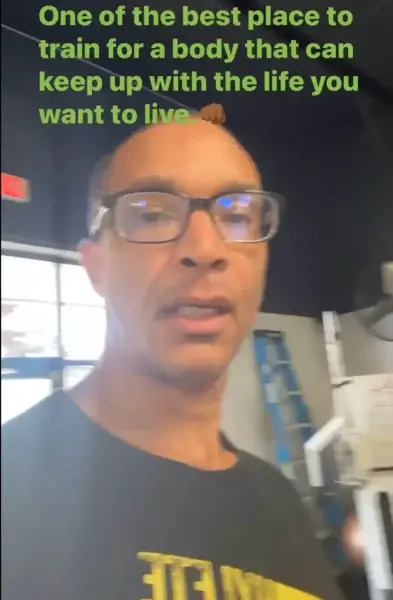
If you ask the average person about the most important part of their body for lifelong movement and health, you’ll get all sorts of answers: “my back,” “my knees,” “my core.” Rarely will someone say “my pelvis”—and yet, the pelvis is the true crossroads of the body, the silent foundation for posture, motion, and force.
Why Pelvic Health Matters More Than You Realize
Think of your pelvis as Grand Central Station for movement. Every step you take, every time you sit, lift, run, or even breathe, forces travel through the pelvis—up from your legs into your spine and downward from your trunk. When the pelvis is aligned, strong, and mobile, the rest of the body thrives. But if even a small muscle is weak, tight, or unbalanced here, your risk for injury and pain skyrockets.
Case Study: “James” and the Unraveling Chain
James came to SolCore after years of recurring hip tightness. A frequent hiker and recreational runner, he first noticed pain in his lower back, then developed “glute amnesia”—trouble activating his core and hip muscles. Over months, this led to pains in his knees, plantar fasciitis, even headaches. One thorough assessment showed the root: he lacked pelvic alignment and core pelvic stability. Instead of treating just his symptoms, we rebuilt strength and mobility in his pelvis. Within a few months, James was hiking pain-free for the first time in years.
Anatomy: What Goes Wrong (and Why)
The pelvis connects the lumbar spine with the femurs, linking the “trunk” and “legs” via dozens of ligaments, muscles, and key nerves. An unstable pelvis can take many forms:
- Imbalanced hip flexors or rotators
- SI joint dysfunction (common in both athletes and non-athletes)
- Weak glutes, tight adductors, or shortened pelvic floor
- Asymmetrical or limited gait patterns
The cumulative effects? Poor force transfer, compensation in the knees, weak low back stability, even jaw and neck issues (yes, it can travel up the chain that far).
Clamshells & Band Squats Aren’t Enough
In the age of Instagram fitness, you’ll see “clamshells” and “band walks” prescribed for pelvic health. But the truth? While better than nothing, these often underwhelm—because the pelvis needs to train as a coordinated, 3D system.
- Real pelvic health means:
- Strengthening all layers of hip and pelvic floor muscles
- Ensuring symmetric mobility from left to right
- Mobilizing the SI joint with targeted movements
- Teaching the body to resist, transfer, and generate force equally
Step-By-Step: How to Build Lasting Pelvic Strength
- Bilateral and Unilateral Movements
Train both sides equally (bilateral), and also in isolation (unilateral). Single-leg bridges, standing hip mobility, lateral step-overs, and targeted dynamic stretches all help. - Fascial Chain Integration
Include the pelvis in the entire fascial network—integrate loading and lengthening movement patterns (think: myofascial stretches that travel from feet through the torso). - Functional Movement Assessment
A trained eye (often using hands-on methods, such as [osteopathic manual therapy]) can detect imbalances not visible in regular gym tests. - Address Mobility as Much as Strength
Most injuries stem from a loss of pelvic mobility, not just weakness—restore range, then layer in control. - Pain as a Signal, Not a Sentence
Stop “pushing through” if pain persists—see it as your body’s request for assessment and correction.
Gender, Age, and the Pelvis
- Women experience increased pelvic health needs with pregnancy, postpartum, and hormonal changes. Weakness or tension here can affect not only movement, but bladder health, sexual health, even posture and digestion.
- Men often ignore pelvic health, thinking it’s only about hip flexors or glutes—then end up with hernias, groin pulls, or chronic back pain.
- Aging always highlights weak links. A stable, mobile pelvis is the #1 predictor of fall prevention, smooth gait, and even cognitive confidence (movement and balance affect brain health!).
Why Osteopathic Manual Therapy Is the Gold Standard
DIY work can only take you so far. Osteopathic manual therapy targets the root. At SolCore, that means:
- Manual assessment to detect joint, ligament, or myofascial issues
- Hands-on releases to realign and balance
- Corrective exercise that builds resilience from the ground up
- Education about movement, posture, and daily habits that support—not sabotage—your pelvis
Our results? Clients with decades of pain or recurring injuries become stable, strong, and able to return to running, lifting, hiking—and simply enjoying life.
Final Thoughts: The Silent Power of Pelvic Care
You can’t see your pelvis as easily as your biceps or abs, but when you invest in this foundation, everything else improves—strength, athletic performance, sex life, balance, and long-term independence.
Ready to reclaim your foundation for life? Book a consult for Osteopathic manual therapy and experience movement transformation from the center out.
It’s not just working out, it’s building a foundation for a better life.
Find out more @

Leave a Reply